Key in a search term below to search our website.
Key in a search term below to search our website.
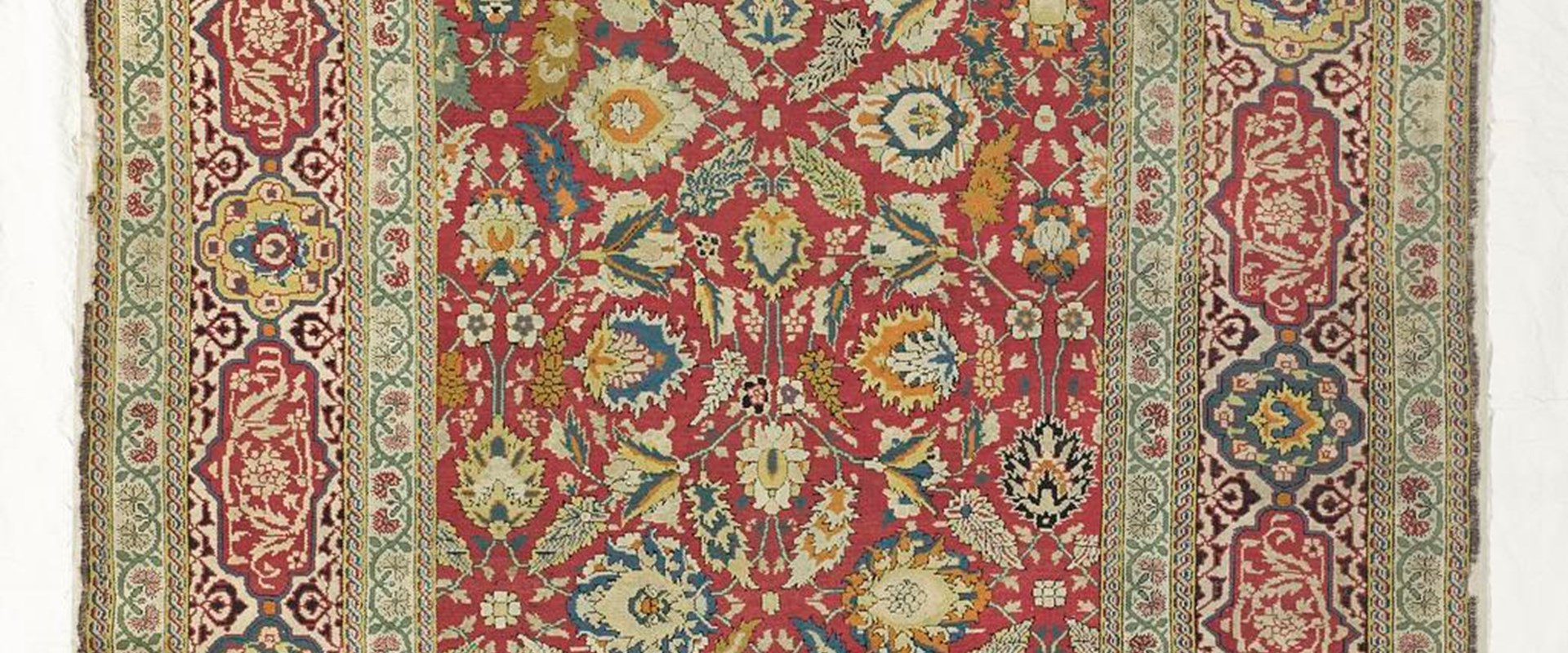
This exceptionally rare table carpet was found at Glamis Castle, the home of the Earls of Strathmore and Kinghorne, in the 1970s. Evidence suggests that it was probably commissioned especially for the family.
Highly prized
Because such carpets were highly prized, they were only very rarely ever placed on the floor.
Found in 1970
It was found at Glamis Castle, the home of the Earls of Strathmore and Kinghorne, in the 1970s.
Dyes from around the world
Study in the lab revealed that the bright red dyes in the carpet are a mixture of madder root from Europe and cochineal, a dye made from the dried, crushed females of the cochineal beetle, from Mexico.
3D mending
Conservators at National Museums Scotland decided to make a patch a hole using 3D printing technology.
Meaning of monogram
A close inspection of the monogram in the carpet reveals the letters I L C K M E knotted together. I L C and K refer to I[ohn] L[yon] C[omes] K[inghorne].
Dimensions
The table carpet is 5.3 m in length and 2.45 m wide.
Carpets originated in the Middle East or Asia and first came to Europe as diplomatic gifts or prestigious commissions for nobles and wealthy merchants. Because such carpets were highly prized, they were only very rarely ever placed on the floor, it was much more common for carpets to be spread across tables.
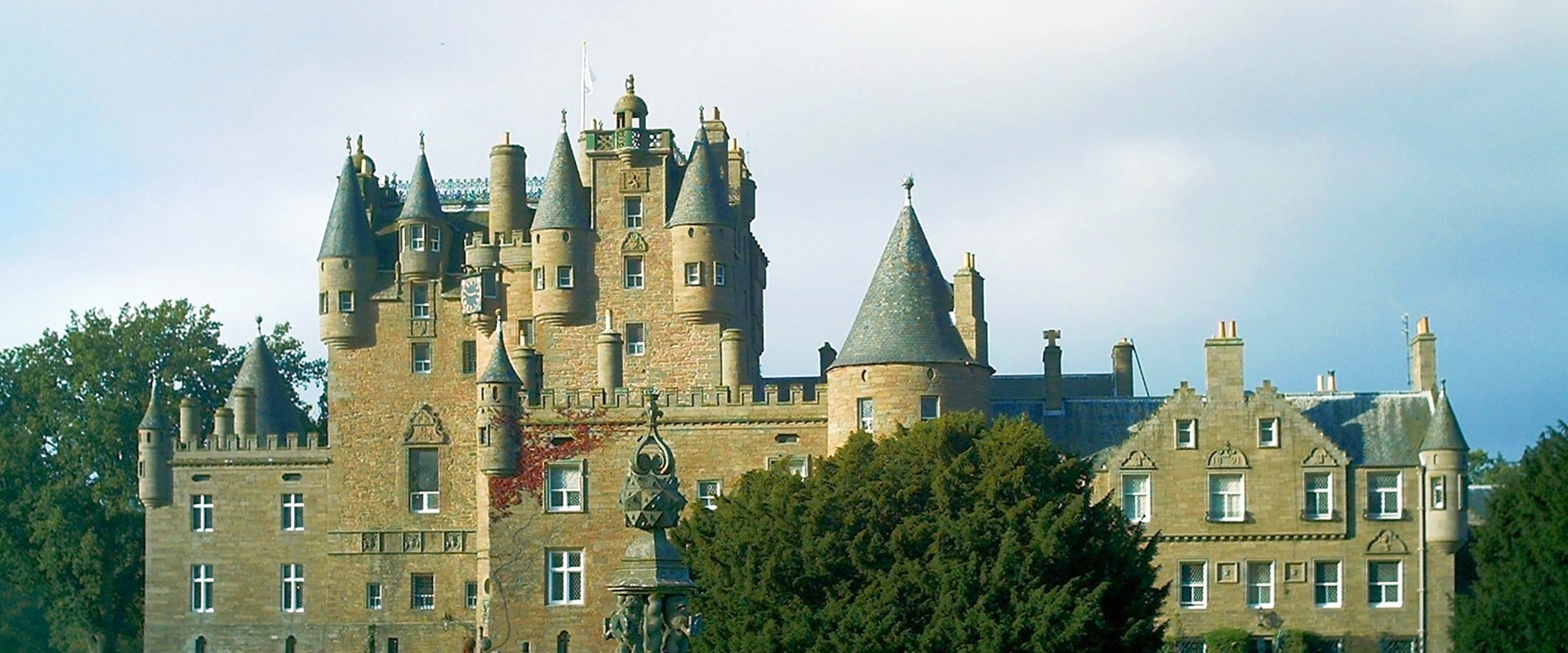
Image by Macieklew [CC BY-SA 2.5]
Found at Glamis Castle in Angus, the family home of the earls of Kinghorne, this table carpet was probably made for John, the second Earl of Kinghorne. Born in 1596, John was the son of Patrick Lyon, for whom James VI of Scotland and I of England had created the hereditary title in 1606.
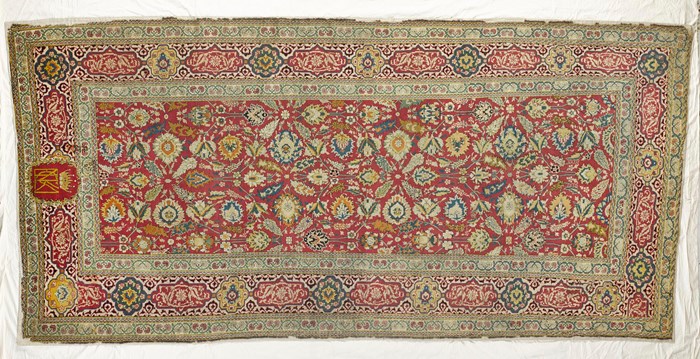
The truncated motifs and irregular pattern repeats suggest that this carpet was made with a specific piece of furniture in mind. A number of inventories of Glamis survive. They show that there were indeed several carpet-covered tables.
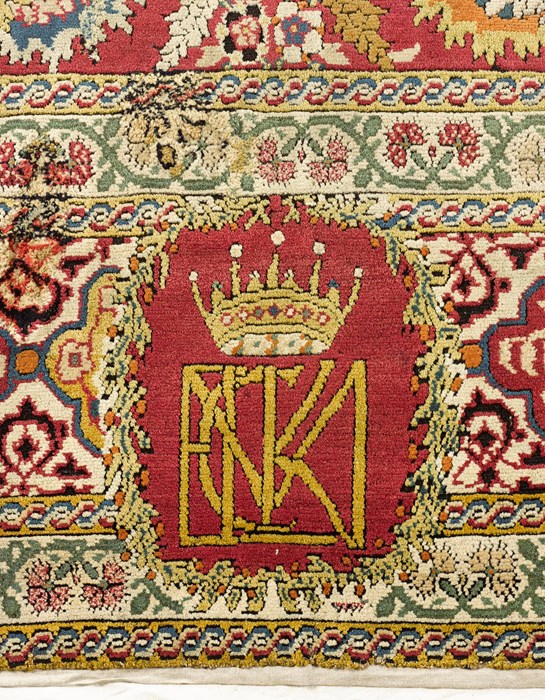
A close inspection of the monogram in the carpet reveals the letters I L C K M E knotted together. I L C and K refer to I[ohn] L[yon] C[omes] K[inghorne]. Comes refers to the title of Earl, which the family had held since 1606.
One clue in the Great Hall of Glamis Castle suggests an earlier rather than later date for the carpet. The carpet’s crowned monogram is also found in the elaborate plaster ceiling of the hall which was reconstructed around 1620, not long after John Lyon married his first wife, Margaret Erskine.
The Kinghorne carpet is very old and has some wear and tear, including a hole on one side. Conservators at National Museums Scotland decided to make a patch using 3D printing technology.
In 2014, our analytical scientist began a detailed study of the carpet to discover more about the many different dyes used in the design.

Dyes from each sample were separated into individual chemical components using the process of chromatography, which shows the different ultraviolet-visible spectrums and masses of each component.
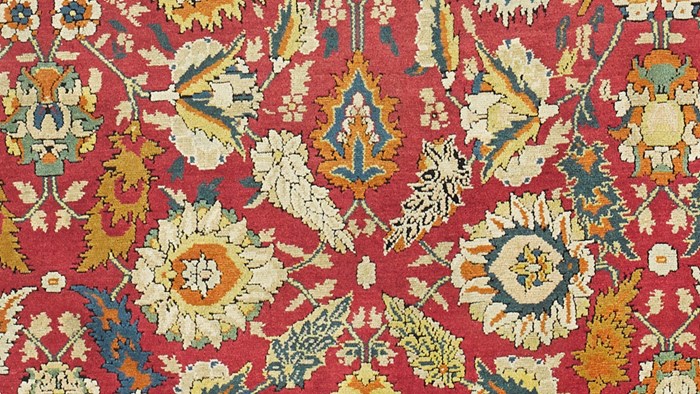
The study revealed that the bright red dyes in the carpet are a mixture of madder root from Europe and cochineal, a dye made from the dried, crushed females of the cochineal beetle, from Mexico.
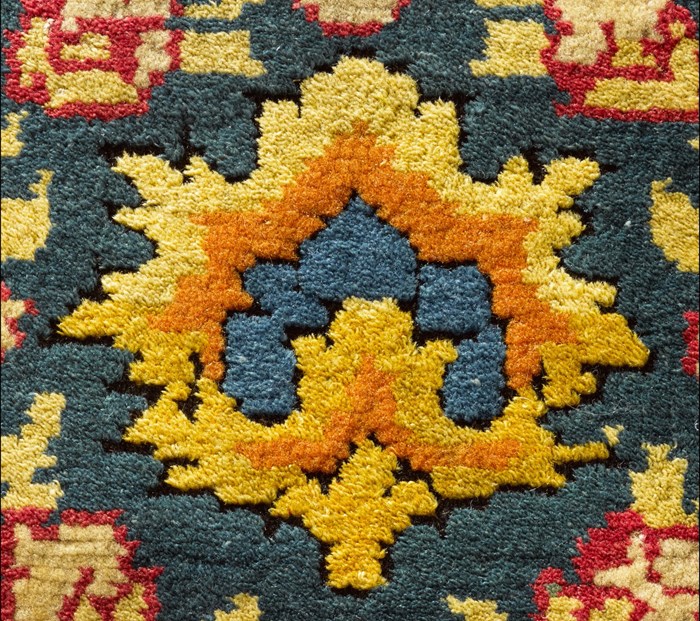
Some shades in the carpet were made by overdyeing, dipping yarns first in one dye and then another. Subtle shades of green were made by overdyeing native yellow weld with blue woad. Different shades of orange were made using weld, madder, and brazilwood.
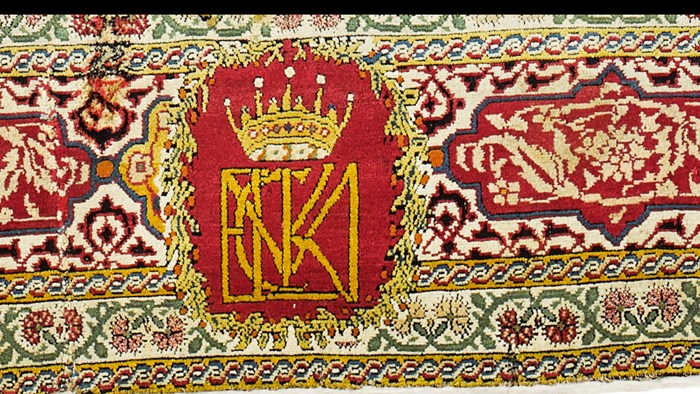
Our study revealed that the yellow dyes faded at different rates in some areas of the carpet. The more faded section, above the dotted line in the image, may have rested on top of the table, where it was probably exposed to more light. The darker area of yellow, including the monogram, below the dotted line, could have hung down over the side where it would have been less exposed.